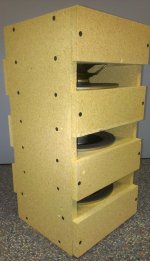Hello,
I would like to try to build something like this ripole stack (see img)
with six MCM 55-2973 12" woofers,
https://www.newark.com/mcm-audio-select/55-2973/12-woofer-with-poly-conerubber/dp/80R7012
If it works out I would build two and combine them into a three way dipole speaker with a mid and tweet on top.
Can you help me understand the layout of what I am looking at and perhaps some guidance on how to build this?
Thank you,
David.
I would like to try to build something like this ripole stack (see img)
with six MCM 55-2973 12" woofers,
https://www.newark.com/mcm-audio-select/55-2973/12-woofer-with-poly-conerubber/dp/80R7012
If it works out I would build two and combine them into a three way dipole speaker with a mid and tweet on top.
Can you help me understand the layout of what I am looking at and perhaps some guidance on how to build this?
Thank you,
David.
Attachments
I was not able to open your link to see the woofer you were proposing but of course Google immediately threw this at me. Which IS actually relevant...
Very good looking driver for the money.
https://www.ebay.com/i/392177947904...jBcyxte5WkQIRcaOB3Ks3A1LUR2eneShoCwUIQAvD_BwE
Very good looking driver for the money.
https://www.ebay.com/i/392177947904...jBcyxte5WkQIRcaOB3Ks3A1LUR2eneShoCwUIQAvD_BwE
I was not able to open your link to see the woofer you were proposing but of course Google immediately threw this at me. Which IS actually relevant...
Very good looking driver for the money.
https://www.ebay.com/i/392177947904...jBcyxte5WkQIRcaOB3Ks3A1LUR2eneShoCwUIQAvD_BwE
Interesting. Extremely high Qes and 82dB, should have very clean distortion performance within power/xmax limits from the look of it. A lot of nice features to go along with a driver optimized for small baffle systems, made in USA too, at first I thought "Chinese bling" with all the cosmetic features.
I have some experience with this kind of "thing":
Twelve 12" driver dipole subwoofer build thread
Where do you plan to cross this over (to the mid or whatever is the next higher band)?
The reason I ask is that the "depth" of the slots that you are creating cause a resonance that will result in a strong dip and peak in the response, especially when the opening area is relatively small. Your design seems much like a bunch of Ripoles. A Ripole cannot really be used above the frequency of the lowest peak in the resonance, and this may be at or below 300Hz. If so, 200Hz is about the max frequency. As an example, this is the kind of peaking you could expect from an equalized ripole (black curve) and with an additinoal low pass filter (blue curve):
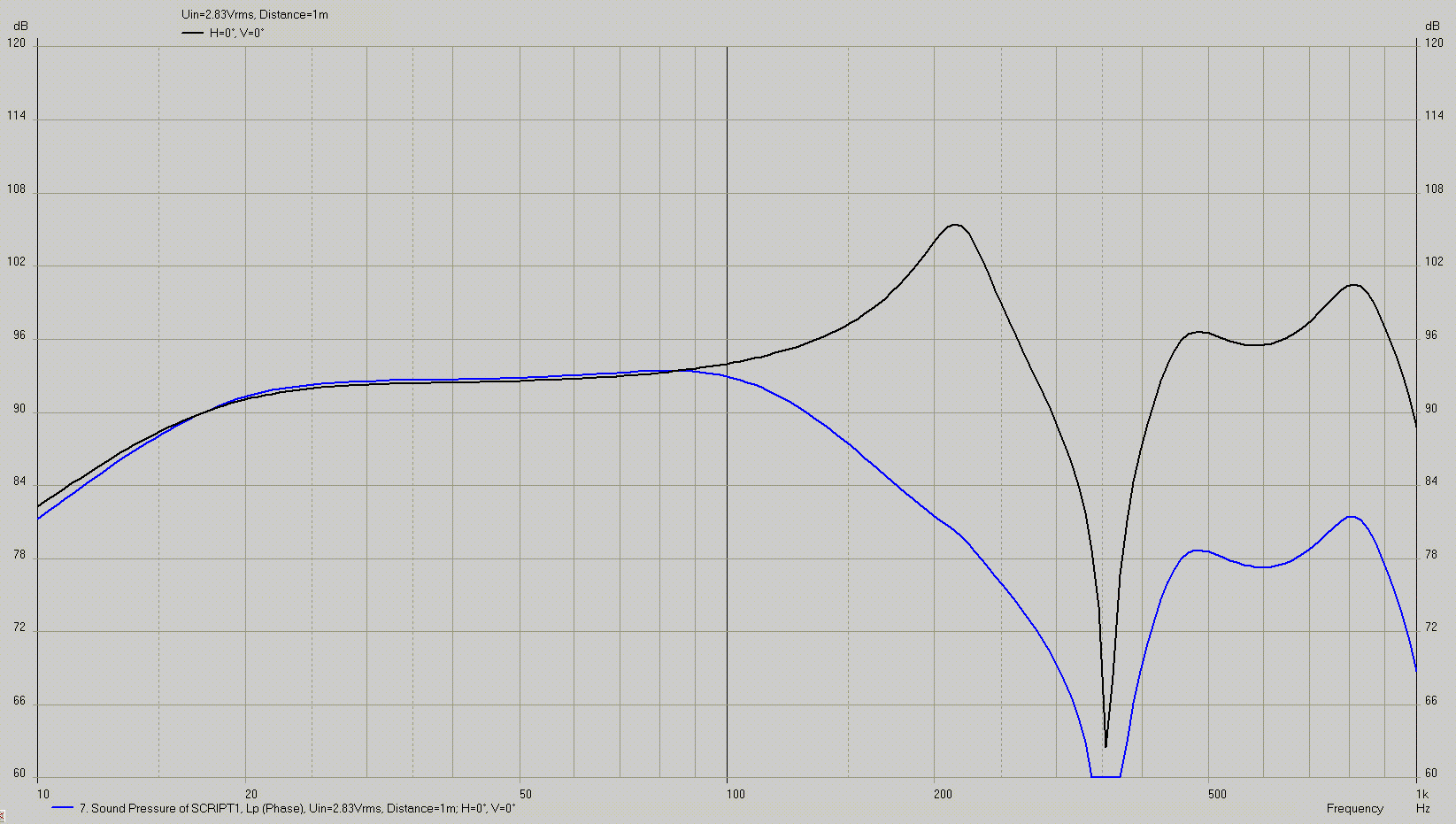
The plot is actually from a W-frame using 12" drivers. A W-frame will have LESS peaking compared to a ripole, but you get the general idea.
To move the lowest peak (black line at 225Hz ish in plot above) up in frequency you have to make the design "shallower" by using smaller driver. A stack of 8" high Qts high Xmax woofers would be good. Any smaller diameter and the bass response is typically too be anemic. Low Xmax and low total swept volume are not good in this application, but the right 8" drivers can work...
Twelve 12" driver dipole subwoofer build thread
Where do you plan to cross this over (to the mid or whatever is the next higher band)?
The reason I ask is that the "depth" of the slots that you are creating cause a resonance that will result in a strong dip and peak in the response, especially when the opening area is relatively small. Your design seems much like a bunch of Ripoles. A Ripole cannot really be used above the frequency of the lowest peak in the resonance, and this may be at or below 300Hz. If so, 200Hz is about the max frequency. As an example, this is the kind of peaking you could expect from an equalized ripole (black curve) and with an additinoal low pass filter (blue curve):
The plot is actually from a W-frame using 12" drivers. A W-frame will have LESS peaking compared to a ripole, but you get the general idea.
To move the lowest peak (black line at 225Hz ish in plot above) up in frequency you have to make the design "shallower" by using smaller driver. A stack of 8" high Qts high Xmax woofers would be good. Any smaller diameter and the bass response is typically too be anemic. Low Xmax and low total swept volume are not good in this application, but the right 8" drivers can work...
The other thing I would caution you about is the required input POWER.
When you have lots of drivers, they each will still need some level of power. It does NOT matter how they are connected, the power that reaches each driver must be accounted for.
In my 12-driver subwoofer project, I did not realize the scope of this problem. I thought "well I will just do some series-parallel connection to get about the right impedance". I was in for a nasty surprise! The problem is that, no matter how the electrical connection is made, the total input power will be distributed N ways. With my 12 drivers, this meant 1/12th of the total input power went to each driver. Also they were not very high sensitivity drivers in the first place. Even with an amp of around 300W driver the subwoofer, because of the dipole losses and other factors, the output could not be made to be very "loud".
It's best to try and keep the sensitivity as high as possible to counteract some of the dipole losses. The best approach would be to use four 16 Ohms drivers in parallel to get a 4 Ohm load, but it will not be easy to find a driver that meets your criteria and that is 16 Ohms. Otherwise, four 4 Ohm driver in series-parallel will result in a 4 Ohm load as well but the sensitivity gain will only be half as large.
When you have lots of drivers, they each will still need some level of power. It does NOT matter how they are connected, the power that reaches each driver must be accounted for.
In my 12-driver subwoofer project, I did not realize the scope of this problem. I thought "well I will just do some series-parallel connection to get about the right impedance". I was in for a nasty surprise! The problem is that, no matter how the electrical connection is made, the total input power will be distributed N ways. With my 12 drivers, this meant 1/12th of the total input power went to each driver. Also they were not very high sensitivity drivers in the first place. Even with an amp of around 300W driver the subwoofer, because of the dipole losses and other factors, the output could not be made to be very "loud".
It's best to try and keep the sensitivity as high as possible to counteract some of the dipole losses. The best approach would be to use four 16 Ohms drivers in parallel to get a 4 Ohm load, but it will not be easy to find a driver that meets your criteria and that is 16 Ohms. Otherwise, four 4 Ohm driver in series-parallel will result in a 4 Ohm load as well but the sensitivity gain will only be half as large.
I think perhaps it is not stacked separate ripoles that I am looking for but something more like this where there is magnet to cone,
Yes, that is a stacked Ripole!
With 6 woofers that are 7.2 ohm, three parallel sets of two in series should net an impedance of 4.8 ohm.
Yes, that is a stacked Ripole!
Any thoughts on the math/rules for laying out such a stack?
There aren't any rules, per se......other than not letting the cone of a driver hit the adjacent drivers magnet. 🙂Any thoughts on the math/rules for laying out such a stack?
And, you have to be able to assemble it in a halfway reasonable manner. For example, if one of the drivers fail, will you be able to remove it without too much trouble?
I fail to see the attraction in something like this. It's a horribly tedious wood-cutting and assembly exercise for no real benefit.
Dave.
Yes that is not a ripole. The ripole has face to face woofers to lower the fs. Or so the patent states..I think perhaps it is not stacked separate ripoles that I am looking for but something more like this where there is magnet to cone,
Jazzman's DIY Electrostatic Loudspeaker Page: Ripole Subwoofers:
Last edited:
At the DC hifi show a couple of yrs ago they had a demo of field coil speakers. Not of relevance. But for his sub he had a stack of dipole 10's (6-10, I counted but don't rember) on each side driven by a crown class-d something or other...
The woofers were very clean, uncolored and expressive.
I always wanted to try something similar but like most things the project was pushed to the back.
The woofers were very clean, uncolored and expressive.
I always wanted to try something similar but like most things the project was pushed to the back.
Yes that is not a ripole. The ripole has face to face woofers to lower the fs. Or so the patent states..
Jazzman's DIY Electrostatic Loudspeaker Page: Ripole Subwoofers:
You can most certainly have a single driver Ripole, and face to face has nothing to do with making Fs lower per se. You CAN do it this way:
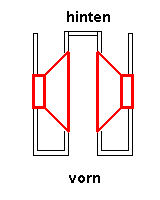
...but you will get lower distortion by putting all the drivers facing the same way, with the magnet of one driver nested into the cone of the adjacent driver.
Lautsprechershop.de sells a "stacked Ripole" - those drivers don't look to be face to face to me. It's just two of their "single driver Ripole" units on top of each other and integrated together into one unit. See:
See: RiPole Subwoofer
Image of stacked Ripole:
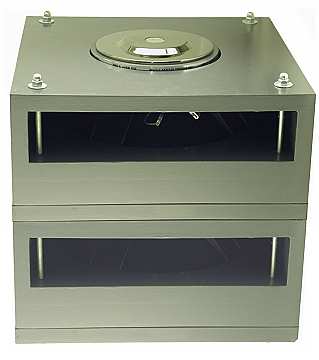
Also of note: the frequency response (with filters):
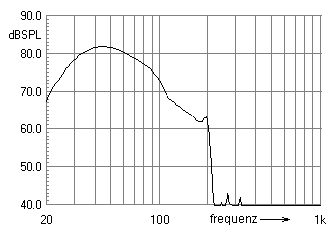
@DaveFred: Can you see why this would not really work as a woofer section in a 3-way loudspeaker unless you can cross over to the "midrange" around 100Hz?
You can most certainly have a single driver Ripole, and face to face has nothing to do with making Fs lower per se. You CAN do it this way:

...but you will get lower distortion by putting all the drivers facing the same way, with the magnet of one driver nested into the cone of the adjacent driver.
Lautsprechershop.de sells a "stacked Ripole" - those drivers don't look to be face to face to me. It's just two of their "single driver Ripole" units on top of each other and integrated together into one unit. See:
See: RiPole Subwoofer
Image of stacked Ripole:

Also of note: the frequency response (with filters):

@DaveFred: Can you see why this would not really work as a woofer section in a 3-way loudspeaker unless you can cross over to the "midrange" around 100Hz?
Charlie,
I have a couple of drivers here that I was thinking of using,
Visaton AL130M-8,
AL 130 M - 8 Ohm | Visaton
Or
SB17MFC35-8
6" SB17MFC35-8 :: SB Acoustics
That would then be crossed over to a NEO3 open back tweeter
I was not able to open your link to see the woofer you were proposing but of course Google immediately threw this at me. Which IS actually relevant...
Indeed! Quite a bit different than the MCM though, which may/may not be a better choice overall: https://www.newark.com/mcm-audio-se...oly-conerubber/dp/80R7012#anchorTechnicalDOCS
GM
I think the gist of a ripole is the slot loading and that can be done cone to cone or cone to magnet.
The patent states cone to cone. The opposing force is "claimed" to lower the fs of the drivers..I think the gist of a ripole is the slot loading and that can be done cone to cone or cone to magnet.
YMMV
I have some experience with this kind of "thing":
Twelve 12" driver dipole subwoofer build thread
Where do you plan to cross this over (to the mid or whatever is the next higher band)?
The reason I ask is that the "depth" of the slots that you are creating cause a resonance that will result in a strong dip and peak in the response, especially when the opening area is relatively small. Your design seems much like a bunch of Ripoles. A Ripole cannot really be used above the frequency of the lowest peak in the resonance, and this may be at or below 300Hz. If so, 200Hz is about the max frequency. As an example, this is the kind of peaking you could expect from an equalized ripole (black curve) and with an additinoal low pass filter (blue curve):

The plot is actually from a W-frame using 12" drivers. A W-frame will have LESS peaking compared to a ripole, but you get the general idea.
To move the lowest peak (black line at 225Hz ish in plot above) up in frequency you have to make the design "shallower" by using smaller driver. A stack of 8" high Qts high Xmax woofers would be good. Any smaller diameter and the bass response is typically too be anemic. Low Xmax and low total swept volume are not good in this application, but the right 8" drivers can work...
Charlie, how did you handle the top and bottom chamber where there was only "half" the loading as any of the other chambers?
Thank you,
David.
- Status
- Not open for further replies.
- Home
- Loudspeakers
- Multi-Way
- Looking to build ripole bass section with six 12" woofers, how to design?

